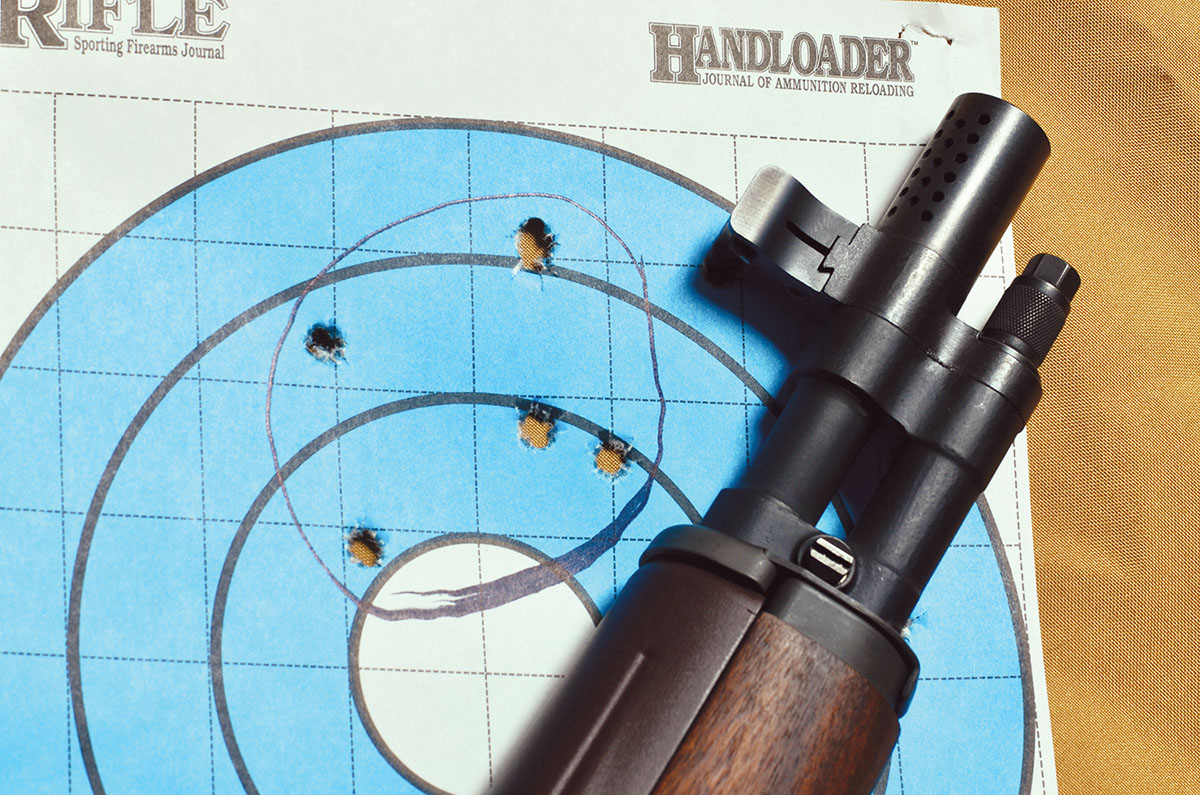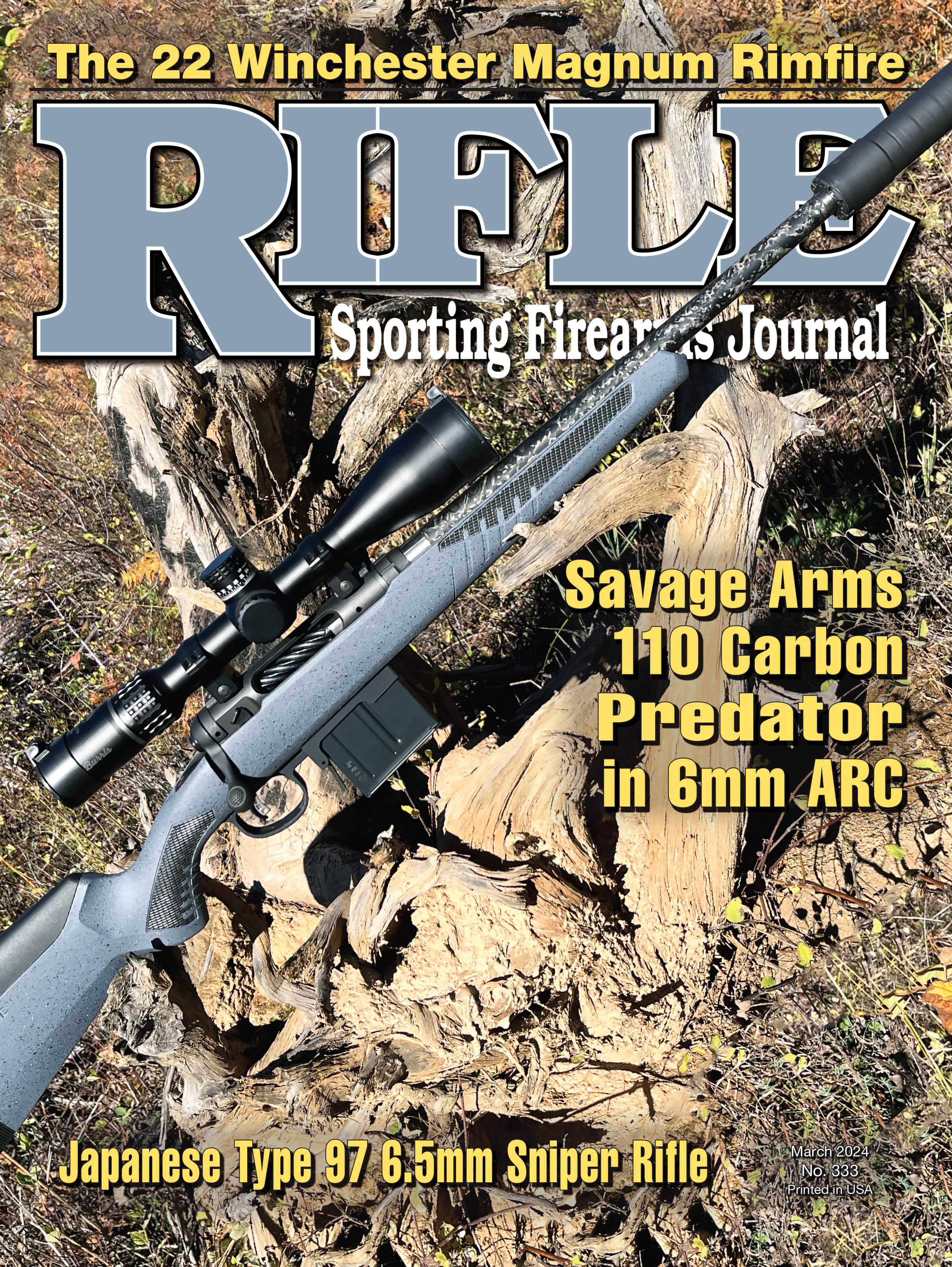Springfield Armory M1A
Unappreciated at the Time, Beloved Ever Since
feature By: Terry Wieland | March, 24

“(The M14) is modern in name only,” he wrote, and “represents…a monumental mechanical failure for U.S. Army Ordnance.”

While our NATO allies (reluctantly) agreed to the cartridge, not one adopted the M14 rifle. It was, Lachuk concluded, a total failure, and he predicted it would have “the shortest life in history from production to obsolescence.”
He was not wrong. But he was not entirely right, either. The M14’s service life was, indeed, short, but the rifle itself is in production to this day – and for good reason.


There was no argument with the qualifications of any of them: John Lachuk was a well-respected magazine writer who wrote extensively for Guns & Ammo, was at least partially credited with the development of the 44 Magnum, and coauthored a number of books, including one on big-game rifles with Elmer Keith. Jac Weller was a former All-American guard on the Princeton football team that went 25-1 during the 1930s (this is significant), obtained a degree in mechanical engineering, and was noted as both a historian and firearms expert with a dozen books to his credit. As for Jim Carmichel, as shooting editor of Outdoor Life for more than 30 years, he established a reputation as an expert on rifles in all their manifestations.

The problem lay mainly in the stock design, but its faults were magnified by the sheer power of the cartridge, the rifle’s light weight (for a machine gun) and its cyclic rate of 750 rounds per minute. It took a mere 1.6 seconds to empty its 20-round box magazine. An ex-army friend of mine, who trained with the M14 in the 1960s, said on full-auto it was the shooting equivalent of bull-riding.
The M14 stock was, in reality, little different than the Garand. It did not utilize the separate buttstock and pistol grip, combined with straight-line recoil, found in competing infantry rifles such as the FN-FAL, AK-47, or Spanish CETME. According to W.H.B. Smith (The Book of Rifles) this was a deliberate decision on the part of the military authorities. “After careful consideration and experimentation, the conventional pistol-grip stock of the M1 was retained…in preference to the straight-line submachine gun style…where the buttstock and pistol grip are separate units.”
The principal advantage of the latter, he wrote, is “reduced recoil and climb,” while the M1-type “avoids high line of sights, slow handling in assuming shooting position, and deliberation required to position rifle and align sights.” In other words, the M14’s conventional stock was faster handling and more intuitive – all to the good in a conventional rifle, but not in one intended to double as a machine gun.

“We scored with the first shot only. We fired bursts of varying length standing, sitting, and prone,” he wrote. “If we took the same care in aiming, we placed the first shot where it would have gone if fired semi-automatic.
“However, subsequent shots went heaven knows where. No matter how many shots we put into the burst, only the first hit the standard 4-foot by 8-foot targets at 100 yards.”
His conclusion?
“The M14 is the best military rifle in the world fired semi-automatic, but wastes ammunition to no useful purpose when fired full automatic.”
This is where Weller’s athletic career comes in: If a former All-American offensive guard could not control the beast, what chance would your average infantryman have?
But fired semiauto? Ah, that was something else again!
“The greatest thrill that I have ever known in rifle shooting came in firing 20 rounds within little more than 20 seconds semi-automatic at a bull 200 yards away,” he reported. “The weapon can be fired almost as quickly as the trigger can be pulled. It is truly astonishing how beautifully this rifle comes back on the target after each shot.”
Weller’s companion, Lt. Col. Frank Jury, put 19 shots out of 20 into an 8-inch bull, at 200 yards, in 22 measured seconds. Beat that if you can.

In the 1960s, a company in Texas using the name (with permission) Springfield Armory began producing a civilian model called the M1A. It was, naturally, semiauto only, but otherwise pretty much as-issued. It was one of these rifles that Jim Carmichel obtained to do some testing.
A national match competitor of long standing, as well as a varmint shooter and big-game hunter, Carmichel arranged to have a scope fitted and, using his favorite National Match ammunition, set out to see what the rifle would do.
With a 12x scope, fired from a bench as he would test any target rifle, Carmichel reported his smallest five-shot group at .600 inch, his largest at 1.250 inches, and an average of just under an inch. It was, he wrote, the most accurate semiauto he ever fired.
In 1974, Springfield Armory was purchased by the Reese family of Geneseo, Illinois, the operation was moved, and there it remains to this day. Fifty years later, its line has expanded to include a line of 1911 pistols and a variety of semiauto rifles, but the M1A (M14) remains and is now produced in a far greater range of models than its military designers ever imagined.
At a rough count, Springfield Armory offers about two dozen variations, including some with national match-level triggers. I obtained one that was as close to the original (less the full-auto mechanism) as I could find, as well as one billed as the “tanker” model. The latter is the result of, again, boyhood recollections of companies such as Golden State Arms selling cut-down Garands billed as tankers. In fact, no such production rifle ever existed, although there were experimental models with short barrels. The so-called tankers were simply cut-down Garands, sold for about twenty bucks more than the originals. I tried to find one of those ads in my old magazine collections, but no luck.

Two of us shot both M14s with just the issue sights, so I can’t attest to their absolute accuracy the way Jim Carmichel did. The tanker’s sights are coarser, although it has the match trigger, which seems odd. At any rate, despite difficulty getting a consistent sight picture on the target, it acquitted itself well at 50 yards, as did the standard model at 100.
My friend Burt Reynolds, who runs our shooting range, shot the tanker offhand at a 30-inch steel plate 300 yards out and reported hitting it more than half the time.
Where both rifles really shone, however, was in the combat pits: Throwing some clay targets up on the bank and then snap-shooting them from various distances and positions showed just how well the M1A handles under unorthodox conditions. Put up against an FN-FAL in that situation – and I speak from experience – the M1A would have left it in the dust.
An interesting facet of the original military model with its 20-round magazine is that the magazine can be used as a palm rest, much the way Schützen shooters of old used palm rests on their Ballards and Stevens target rifles. If you have not shot a rifle that way offhand, it’s a revelation: With a palm rest, your forward elbow can rest on the hip, imparting admirable stability. Burt had a 20-round magazine when he was shooting at the plate, and it helped considerably.
American shooters traveling to Germany to compete in the years before 1914 were not allowed to use their palm rests, since German rules forbade it, and German shooters were rather scornful of anyone who needed such an aid. Coincidentally, in Canada, we were not allowed to use the FN’s 20-round magazine as an aid to shooting, whereas Carmichel reported it was perfectly acceptable in the U.S. with the M14.
Altogether, if I had to characterize the M1A based on my own brief experience, it would be: “This is one hell of a rifle.”
Also, it turned out, a very influential one: Although it is not an exact scaled down copy mechanically, Ruger’s Mini-14, introduced in 1973 and in production ever since, echoes its appearance and is one of the most popular rifles of the last 50 years.
Personally, I hope Springfield Armory keeps the M1A, in all its iterations, in production for another 50 years. It certainly deserves to be.
Having more or less proven John Lachuk wrong – or at least, outvoted – regarding the M14, it’s only fair to note that in his testing of various possible successors to the M14, including the FN-FAL and several models from Armalite, he singled out the AR-15 and predicted that it would have a successful military career and a long production life. He was certainly not wrong there.


